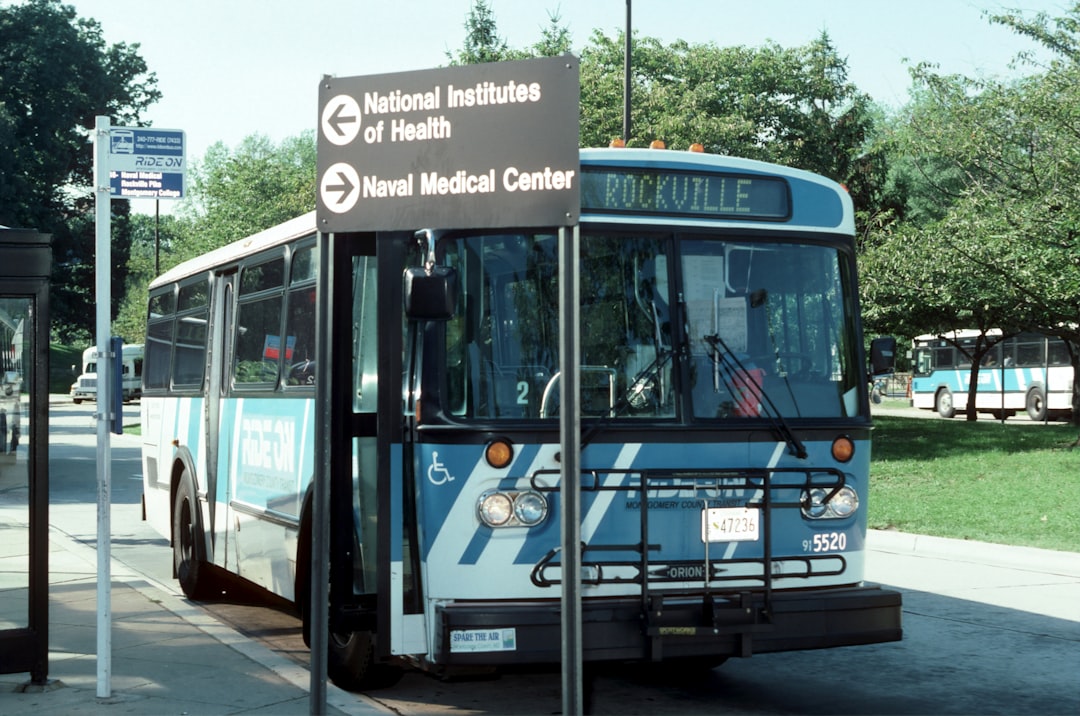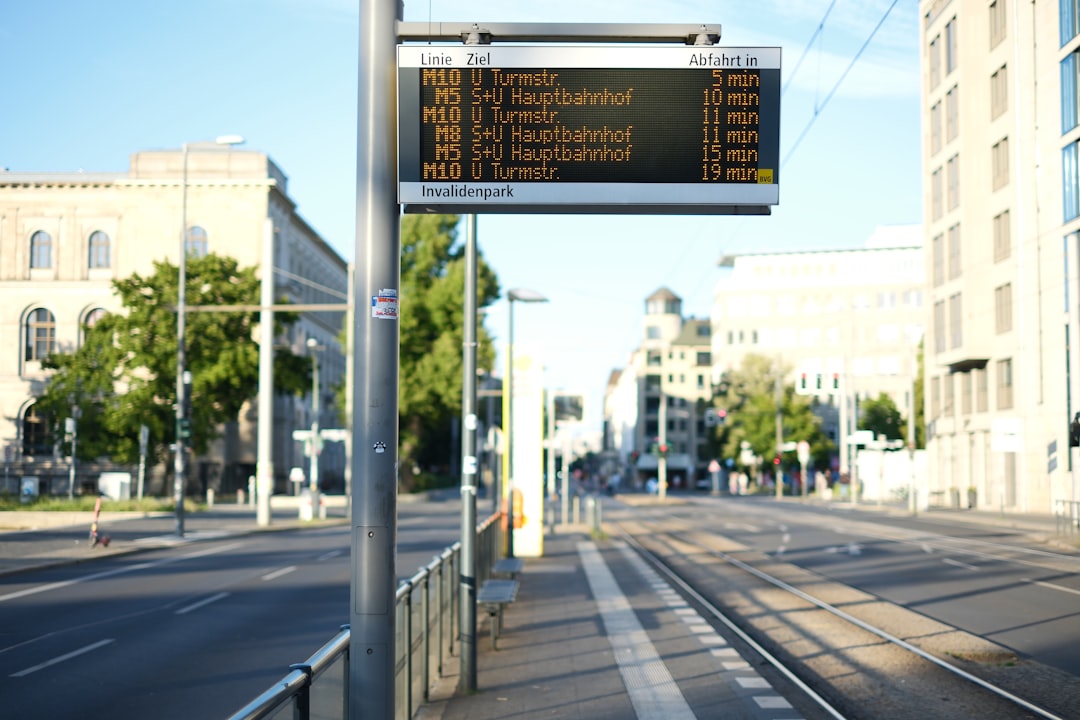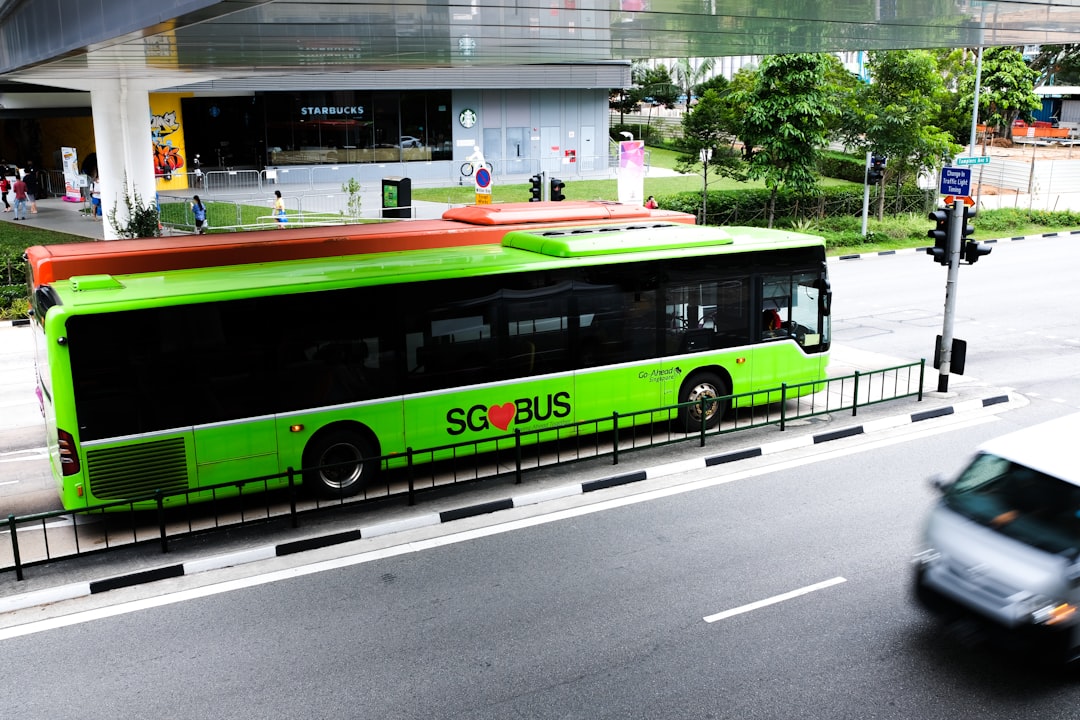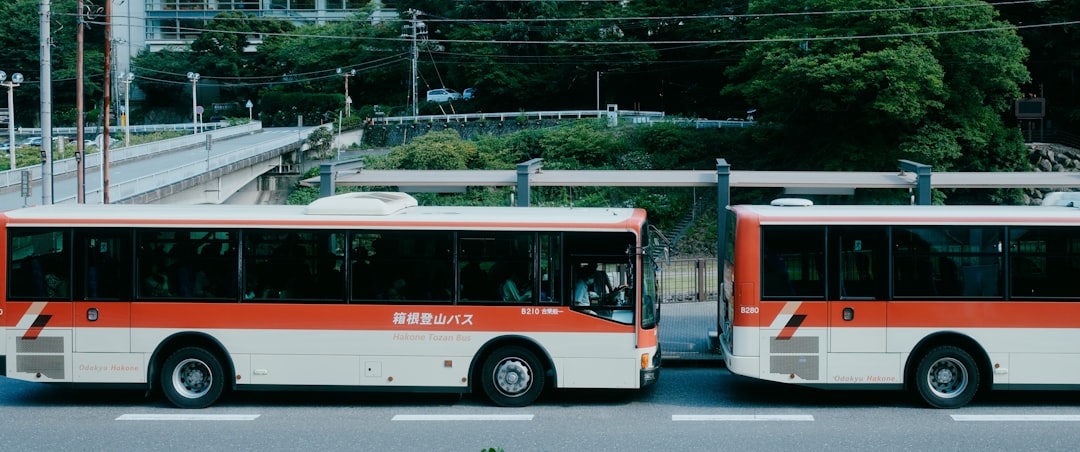

Engage prospects with a scan and streamline customer engagement with FREE QR code marketing tools by Sona – no strings attached!
Create a Free QR CodeFree consultation

No commitment

Engage prospects with a scan and streamline customer engagement with FREE QR code marketing tools by Sona – no strings attached!
Create a Free QR CodeFree consultation

No commitment
The transportation services industry faces mounting pressure to deliver seamless, efficient, and contactless customer experiences due to rapid digital transformation and shifting passenger expectations. Manual ticketing, paper schedules, and information boards are steadily being replaced by mobile-first, on-demand solutions, but these changes introduce new challenges. Providers often encounter missed opportunities with high-value prospects who do not engage via traditional forms, have limited visibility into anonymous riders or business accounts interacting with physical assets, and lose chances for upsell or feedback due to outdated engagement tracking.
QR codes are now pivotal in connecting physical assets like vehicles, terminals, tickets, and signage with digital journeys—a public transit game-changer. For transportation services, QR codes provide a simple way for passengers and partners to instantly access schedules, book rides, complete contactless ticketing, leave feedback, or discover tailored offers with a single scan. Advanced QR analytics enrich rider and account profiles, helping ensure every physical touchpoint can be measured and optimized without friction or delays.
By integrating qr codes in marketing strategically, transportation providers can modernize analog processes, improve revenue, and create a robust data layer for tracking, retargeting, and continuous improvement. This guide explores how QR codes can be leveraged to deliver measurable growth and superior service in transportation while solving visibility and personalization challenges.

QR codes help transportation businesses modernize client interactions, reduce friction, and improve operational outcomes. They eliminate the guesswork that comes with static assets, replacing blind spots with precise insights about who scanned, where they were, and what they did next. The result is a clear line between physical interactions and digital conversions such as ticket purchases, app installs, and loyalty enrollment.
One persistent challenge in transportation is reliance on printed materials that do not reveal which high-value prospects interact but fail to convert. Commuters glance at timetables without leaving a trace, visitors snap photos of route maps instead of signing up, and corporate riders might use services without entering any identifiable data. QR codes turn each of these moments into measurable, trackable events that can be optimized over time. To get started, focus on the highest-friction touchpoints and redesign them with mobile-first journeys attached to a scan.
A dedicated QR automation platform such as Sona QR product overview streamlines execution, security, and analytics. It centralizes code creation, updates destinations without reprinting, and enriches rider profiles. With this foundation, transportation teams can continuously optimize placements, messaging, and offers to improve passenger experience and revenue outcomes while making once-invisible audience segments addressable.

Transportation has historically relied on static, physical information sources like printed timetables, appointment cards, station posters, and paper ticketing. These materials add operational cost and become outdated quickly, and they do not produce actionable data. When a commuter scans a route map with a phone camera or a tourist reads a paper schedule, the provider gains no insight into intent or engagement. This leaves marketing and operations teams guessing about demand, seasonality, or route pain points.
QR codes solve these gaps by converting passive viewing into active engagement and measurable outcomes. Riders can scan to buy a ticket, see live updates, or get customer support within seconds. Service providers can change destinations in real time to reflect delays, detours, or capacity updates without reprinting materials. Most importantly, every scan creates a data point that can be used for segmentation, retargeting, and service improvement.
Whether printed on stop signage, displayed inside ride-share vehicles, or integrated with digital displays, QR codes introduce reliability and precision into every step of the passenger journey. They equip operators to respond quickly, tailor experiences, and continuously learn from rider behavior.
Transportation providers can deploy several QR formats to support ticketing, information access, support, and growth marketing. The right format depends on the action you want a rider or partner to take and the data you need to collect. In practice, dynamic web link codes with analytics are the most common, but specialized formats like Wi-Fi and app downloads can dramatically improve convenience and adoption.
Dynamic QR codes are particularly powerful in transportation because they decouple the printed or physical asset from the digital destination. If the destination changes, the QR code remains valid, preventing outdated links during route changes or emergency alerts. Combining dynamic links with analytics gives you a continuous optimization loop across all touchpoints.
Centralizing these formats in a platform like Sona QR allows you to manage destinations, apply branding, and analyze performance consistently. Unified administration keeps metrics clean, reduces fragmented reporting, and gives you the flexibility to update content without printing delays.

The biggest growth opportunities often hide in plain sight: high-traffic areas where engagement is frequent but invisible to your analytics stack. Every poster, door, seatback, and boarding point can be a portal to revenue and insight if it includes a scannable call to action. The goal is to place QR codes exactly where a rider is pausing, waiting, or deciding, then map scans to conversions in your CRM.
Start by auditing the passenger journey end to end. Note where riders queue, where they look for information, and where staff repeatedly answer the same questions. Replace or augment those moments with QR flows so riders can self-serve instantly and you can capture data. Use unique codes per placement to identify which assets drive results and which need optimization.
Every targeted placement converts anonymous interest into actionable data. Once you see where and when riders engage, you can align offers, staffing, and messaging with demand more precisely and profitably.

High-performing QR deployments in transportation focus on key rider actions: boarding quickly, finding reliable information, and receiving timely support. When codes are placed where riders intuitively expect help, scan rates are high and conversion paths are short. Pair each use case with a clear call to action and a mobile-optimized destination page.
Focusing on three core use cases can deliver outsized impact. These are relevant to public transit, private shuttles, ride-share partners, and intercity providers alike. Each use case enhances convenience for riders while producing data that fuels smarter operations and marketing.
These use cases deliver immediate wins such as shorter lines, higher satisfaction, and measurable engagement. Over time, scan data helps optimize routes, refine promotions, and prioritize investments that improve both rider happiness and revenue.
Traditional transportation marketing struggled with anonymous foot traffic and untraceable interactions. With QR codes, every scan becomes a signal that captures intent, context, and behavior. You can build segments based on where, when, and why a rider scanned, then retarget with messaging and offers tailored to that behavior.
To get the most from this data, deploy distinct codes across the journey: awareness, consideration, and conversion. Use UTM-tagged links and dynamic destinations to differentiate scans by placement and purpose. Integrate scan events into your CRM and ad platforms to activate behavior-based cohorts for email, SMS, and paid retargeting.
With Sona QR, each code becomes a smart entry point into your funnel. You can retarget based on real behavior rather than assumptions, improving conversion efficiency and reducing wasted ad spend across the board.
QR codes are connectors that unify offline and online activity. In transportation, where so many decisions happen on the move, codes reduce friction, capture data, and drive riders to mobile destinations that convert. When you integrate QR across print, out-of-home, digital displays, and loyalty programs, every channel becomes measurable and orchestrated.
A unified platform to manage codes and analytics is essential. It ensures consistent branding, accurate attribution, and clear reporting. You can compare the performance of a platform screen versus an entry-door sticker, then shift budget or update creative accordingly. Most importantly, scans trigger journeys in your CRM and marketing tools so you can personalize follow-up at scale.
Centralizing QR administration with Sona QR aligns messaging and timing across channels, ensures clean attribution, and turns offline moments into digital outcomes you can optimize.
Executing a QR campaign in transportation is most effective when it follows a repeatable plan. Start by choosing a high-impact use case, then match your code type and design to the environment. Maintain a tight feedback loop by tracking scans, measuring downstream actions, and iterating your placements and CTAs.
The steps below reflect best practices proven by transit agencies, shuttle operators, and intercity carriers. Adapt each step to your routes, vehicles, facilities, and rider segments. Ensure that every code you deploy has a clear purpose, a compelling promise, and a fast mobile landing page.
Select a specific goal tied to a measurable outcome. Focus on one conversion per code to avoid confusing riders in time-sensitive contexts. Examples include streamlining contactless boarding for peak-hour commuters, driving loyalty enrollment on seatbacks, or capturing feedback at parking shuttle exits.
Choose between static and dynamic codes based on your need for updates and analytics. In transportation, dynamic codes are typically the right choice because service conditions change frequently and you need granular performance data to optimize routes and messaging.
Design matters. Riders decide to scan in seconds, and environmental factors like lighting, motion, and viewing distance influence success. Use clear framing, concise benefit-driven copy, and readable sizes. Test across devices and scenarios before rolling out broadly. See innovative advertising for creative approaches.
Roll out codes where they align with rider behavior and dwell time. Track each placement individually so you can compare performance and eliminate low-value placements. Coordinate with operations teams to ensure codes are accessible and not obstructed.
Tracking does not stop at the scan. Measure the entire journey from scan to conversion to repeat use. Identify bottlenecks and make incremental improvements to placement, creative, and landing pages. Let the data guide your next iteration.
A disciplined approach to execution plus ongoing optimization turns QR from a novelty into a reliable engine for engagement and revenue.
The value of QR code marketing in transportation hinges on connecting a physical scan to meaningful outcomes such as a ticket purchase or a loyalty join. Without that connection, you may increase engagement without proving impact. A robust analytics stack closes the loop and justifies investment by tying scan activity to pipeline and revenue.
Start with granular scan data: time, location, vehicle, device, and campaign source. Then capture downstream actions on the landing page such as form fill, purchase, or app install. Finally, sync these events into your CRM so you can attribute conversions to placements, build segments, and trigger personalized journeys at scale.
Investing in analytics turns every scan into an actionable lever. With Sona QR and Sona.com, transportation teams can see how QR engagement contributes to pipeline, subscriptions, and retention, then allocate budget to the placements and messages that perform best.
Once your initial deployments are live, scale what works and refine the rest. Expansion should be thoughtful, guided by data, and aligned with rider behavior. Keep a tight feedback loop between field teams, marketing, and operations so codes remain visible, relevant, and effective.
In transportation, staff education is crucial. Operators, drivers, and station attendants can reinforce QR behavior by pointing riders to codes at the right moment. Pair this with clear, benefit-driven CTAs and you will see scan rates climb quickly.
Start creating QR codes for free: Start creating QR codes for free. Centralize analytics, automate follow-ups, and connect scans to revenue without heavy lift.

Transportation providers around the world have already seen strong results with smart QR campaigns. The common thread is a laser focus on rider needs at the exact time and place of decision. When codes solve an immediate problem and the landing experience is fast, conversions increase and data quality improves. For planning, here’s a helpful qr marketing strategy.
Innovation also thrives when teams combine QR with existing systems. Integrating with ticketing, scheduling, and TMS unlocks in-the-moment personalization, such as showing the next three departures from the platform where someone scanned. The examples below illustrate practical ways to apply QR in varied contexts.
These examples show that QR campaigns succeed when they meet immediate needs, reduce friction, and are tied to measurable outcomes. Borrow the patterns, then tailor them to your routes, rider segments, and partner ecosystem.
Industry leaders have learned that QR deployments are not just a marketing tactic. They are an operational capability that touches customer experience, safety, and revenue management. When QR data flows into transportation management systems and CRMs in real time, teams can adapt messaging, staffing, and offers dynamically. For model selection, see multi-touch attribution.
Security and privacy need to be part of the plan from day one. Riders trust providers to handle data responsibly. Choose platforms that encrypt scan data, offer granular roles and permissions, and support consent-based identity resolution. Done right, QR creates a powerful data layer without compromising safety or compliance.
QR codes have become a central strategy for transportation services, bridging offline and online, enabling contactless experiences, and generating valuable data that drive operational efficiency and conversions. By addressing hidden issues like invisible customer journeys and fragmented data, transportation providers can deliver measurable, personalized engagement across every schedule, ticket, sign, and digital channel.
With the right technology, tracking, and CRM integration, transportation teams can convert every real-world interaction into actionable intelligence and pipeline progress. QR-driven journeys provide more than operational convenience, they unlock revenue growth, retention, and continuous improvement, positioning services to meet the expectations of a digital-first world.
QR codes have revolutionized transportation services by transforming traditional customer touchpoints into dynamic, measurable engagement opportunities that drive conversions. Whether it’s streamlining ticket purchases, providing real-time travel updates, or enhancing rider loyalty, QR codes replace friction-filled processes with instant, mobile-friendly interactions that boost customer satisfaction and operational efficiency. Imagine seamlessly tracking exactly which routes, promotions, or informational materials prompt riders to take action—and optimizing your campaigns on the fly.
With Sona QR, transportation providers can create dynamic, trackable QR codes in seconds, update campaigns instantly without costly reprints, and link every scan to revenue-driving outcomes like ticket sales and service upgrades. No missed chances, no guesswork—just smarter, data-driven growth that keeps passengers coming back. Start for free with Sona QR today and turn every scan into a journey toward increased ridership and revenue.
QR codes enable passengers to instantly access schedules, book rides, complete contactless ticketing, leave feedback, and discover tailored offers with a single scan, resulting in faster, more seamless, and contactless interactions.
QR codes reduce reliance on printed materials, provide real-time updates, offer contactless convenience, enable dynamic content changes, deliver detailed engagement analytics, lower operational costs, and enhance revenue through targeted marketing and improved customer insights.
QR codes link passengers to secure, scannable e-tickets stored in wallets or apps, allowing riders to board without paper tickets, reducing queue times, and enabling operators to track ticket purchases and campaign effectiveness.
Innovative uses include dynamic QR ticketing on platforms and vehicles, QR feedback stickers on seatbacks, automated gate check-ins in logistics, real-time shuttle ETAs via terminal posters, and QR-enabled safety rides on campuses.
By deploying dynamic QR codes with integrated analytics and CRM connections, companies can capture detailed scan data including time, location, and device, track conversion actions, segment riders by behavior and intent, and trigger personalized marketing and operational follow-ups.
Use Sona QR's trackable codes to improve customer acquisition and engagement today.
Create Your FREE Trackable QR Code in SecondsJoin results-focused teams combining Sona Platform automation with advanced Google Ads strategies to scale lead generation

Connect your existing CRM

Free Account Enrichment

No setup fees
No commitment required

Free consultation

Get a custom Google Ads roadmap for your business






Launch campaigns that generate qualified leads in 30 days or less.
